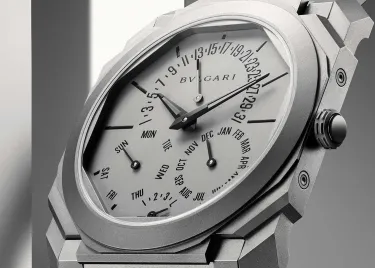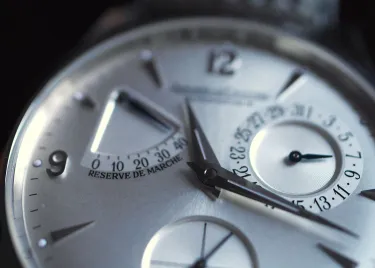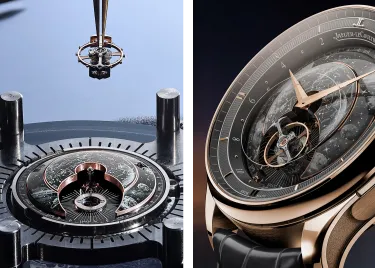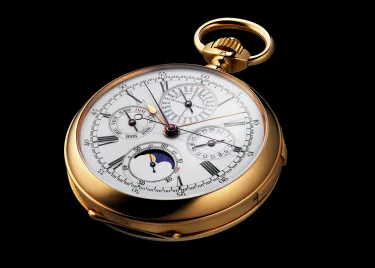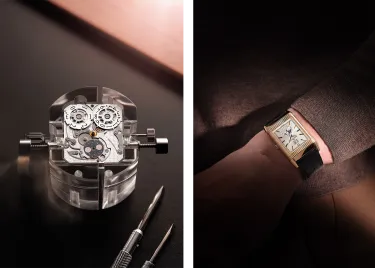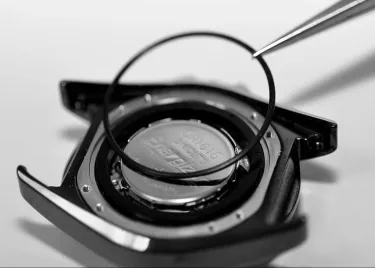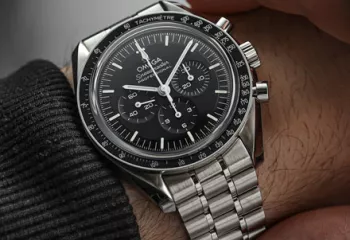Guide
Key words to understand everything about Fine Watchmaking – Part 2
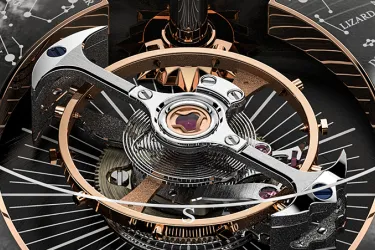
Retrograde display
Retrograde is the term used to describe a hand or other indicator which, at the end of its course, returns to its starting point. This return is instantaneous. This display is highly prized for its visual appeal, as retrograde hands are infinitely more vivid on a dial than the trailing hands used in most traditional timepieces. However, it is a display technique that generates a certain amount of wear on its components and consumes more energy. It is therefore not without technical consequences, however slight, for the design of the movement.
Power reserve
The power reserve is the maximum running time of the movement after it has been fully wound. This concept applies to any mechanical watch, whether manual or automatic. The power reserve indicator is therefore the function that allows the remaining autonomy, usually expressed in hours or days, for the operation of the watch to be displayed on the dial.
The essential tourbillon
The tourbillon is a device patented by Abraham-Louis Breguet in 1801, after all ! It is based on the observation that the components of a watch, and more critically its spring, see their oscillation 'attracted' downwards by the earth's attraction. The movement of the regulating organ is therefore altered, and even more so in an unequal manner when the watch is positioned vertically.
To solve this problem, Breguet invented a cage system in which the escapement and regulation (balance wheel/spring) are enclosed and rotated in all positions, permanently around an axis. In this way, the centre of gravity of the balance-spring system is centred on the axis of rotation, thus compensating for the harmful effects of a purely static oscillation. Breguet has therefore designed this system to 'shuffle' all the vertical positions and, in the end, achieve a satisfactory average. Thus, contrary to popular belief, the purpose of the tourbillon is not to cancel out the effects of gravity but to compensate for them.
The famous "QP”
The date is the notion that means that a watch is able to indicate a calendar element (day, month, year, for example) in addition to the time.
The term "perpetual" means that this watch is able to link, without error, the months of 28, 29, 30 and 31 days, thus taking into account the leap years. Classy !
Moon Phases
The moon phase indication is the complication that visually indicates the different cycles of the moon. These cycles make up the lunation. It is divided into four times: new Moon, first quarter, full Moon and last quarter. These quarters and the full Moon correspond to the portions of the Moon illuminated by the Sun and therefore visible from the Earth.
The Moon's cycle lasts 29 days, 12 hours, 44 minutes and 2.8 seconds, or about 29 and a half days. To simplify, many movements are based on a disc with two moons on it, which makes one complete revolution in 59 days. This amounts to approximately the same thing but avoids the painful mechanical transposition of a cycle as precise as 29 days, 12 hours, 44 minutes and 2.8 seconds. That said, this facility necessarily implies a slight monthly variation which, as the months go by, becomes more pronounced. Thus, a day's difference appears... we leave it to you to do the calculation... after 2 years, 7 months and 20 days.
Water-resistance
In the simplest terms, a water-resistant watch is one that does not allow any liquid or dust to pass through it. Water resistance is not a measure of the watch's impermeability to a liquid, but of its ability to withstand the pressure exerted on it. This is why the resistance index of a water-resistant watch is a pressure measurement index: the bar. The notion of atmosphere is also used. They are equivalent: 1 bar = 1 atmosphere = 1 kg/force/cm². In the absence of a number of bar indicated on the watch, it is preferable never to get it wet, at the risk of making the liquid penetrate the movement itself.
Schematically, simple waterproof watches guarantee a minimum resistance of 10 M / 1 ATM (rain, perspiration), the standard being a resistance to 30 M / 3 ATM (daily life, but neither shower nor diving). Beyond that, a watch guaranteed to 50 M / 5 ATM allows showering, but not diving, with rinsing recommended, while the pieces guaranteed to 100 M / 10 ATM are dedicated to free diving, but with rinsing still recommended. From 200 M / 20 ATM, the watch is deemed to be suitable for professional diving.
With this second part, you know almost everything about the basics of watchmaking. All you have to do is review !
